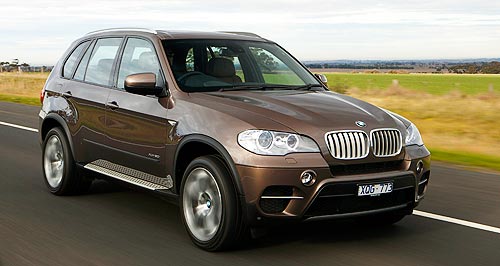News - General News - SafetyMultiple manufacturers caught in various recallsRound two: Mazda has been forced to recall 55,087 examples of its Mazda6, CX-7 and CX-9 (pictured) thanks to defective Takata airbags. Faulty airbags, other issues to blame for large number of recent recall notices10 Aug 2017 BMW, Mazda, Jaguar Land Rover (JLR) and American Special Vehicles (ASV) have all recently recalled cars due to issues relating to airbag deployment, in addition to Holden, Kia, Hyundai and Mitsubishi models called back for other issues. BMW has recalled a hefty 21,649 examples of its X5 and X6 large SUVs as part of the ongoing Takata airbag saga. Affecting models built between 2007 and 2012, the airbag gas generator can corrode when exposed to prolonged humidity, leading to explosion upon deployment and the risk of injury or death from metal shrapnel. The Takata curse has also struck Mazda, with 19,557 examples of its Mazda6 sedan and wagon, 21,450 of its CX-9 large SUV and 14,080 of the CX-7 SUV recalled. Totalling 55,087 vehicles, the recall concerns cars sold between November 15, 2006 and April 30, 2013 and, as with BMW, it is the second round of callbacks for the affected models. A different type of airbag problem has struck ASV, and just six examples of its Ram 1500, 2500 and 3500 pick-up, due to a defective occupant restraint control which may disable in the event of a vehicle roll-over. This means the vehicle’s airbags may not deploy if a roll-over occurs, increasing the risk of injury for occupants. Mercedes-Benz has recalled 222 examples of its A-Class, B-Class, CLA and GLA models sold between October 1 and December 1, 2016 due to the front passenger airbag not meeting specifications. In the event of a crash, the airbags may not deploy as intended, resulting in greater risk of injury for occupants. JLR has recalled model year 2010 and 2011 examples of its XJ luxury large sedan due to incorrectly set airbag deployment parameters. If the airbags are triggered in a crash, the force of the deployment may be too great, posing a greater risk of injury for those inside. A recall has also been issued by JLR for late-2015 examples of the Defender off-roader, due to chafing of the front brake pipe from the calliper to the flexible brake hose. It is the same issue that forced JLR to recall the Defender back in 2015, and could cause brake fluid loss leading to decreased braking performance and increased travel of the brake pedal. Loss of brake fluid should cause a red warning triangle to illuminate on the instrument cluster. In addition, Holden has issued recalls for examples of its Commodore and Caprice built between February 10, 2011 and September 9, 2015 equipped with LPG engines due to the possibility of a loose electrical ground connection in the LPG vaporiser. Occurring in vehicles where the vaporiser has been serviced or replaced, the fault can lead to an electrical arc in the LPG fuel feed hose, potentially resulting in a fuel leak or fire. Kia has recalled 55 examples of the Sportage mid-size SUV and 51 Sorento large SUVs from model year 2011 for a potential fault in the Euro 5 turbo-diesel engine. The fault is caused by the possible premature deterioration of the fatigue-resistance and oil-proofing of the fuel feed hose, which can increase the risk of a fuel hose leak or fire. Korean compatriot Hyundai has issued recalls for a sizeable 30,430 examples of its Santa Fe large SUV sold between April 2, 2012 and July 1, 2016 thanks to a risk of corrosion of the secondary bonnet latch cable. With the bonnet latch not correctly secured, owners run the risk of having the bonnet fly open during travel, blocking the driver’s view of the road and increasing the risk of a crash for occupants and other road users. Finally, Mitsubishi has recalled examples of its Outlander mid-size SUV sold between November 21, 2006 and February 28, 2013, due to a fault with the windshield wiper. The windshield wiper motor can be prone to water intrusion, potentially causing rust and inoperability, which can lead to decreased visibility and an increased risk of a crash for occupants. In all cases, bar Holden and ASV, manufacturers will contact owners of the affected vehicles directly by mail where they can present their vehicles to their preferred dealer to remedy the situation, if necessary. Holden and ASV customers are encouraged to contact their nearest dealer to arrange a fix of the aforementioned faults. Owners looking for additional information or points of contact can do so by searching the ACCC’s product safety website.  Read more25th of July 2017  Brands replacing Takata airbags with like-for-like unitsNew Takata airbags expected to be recalled and replaced again within six years24th of July 2017  Takata scandal claims first Australian lifeACCC launches inquiry into management of Takata recall after Australian man’s death |
Click to shareGeneral News articlesResearch General News Motor industry news |
















Facebook Twitter Instagram